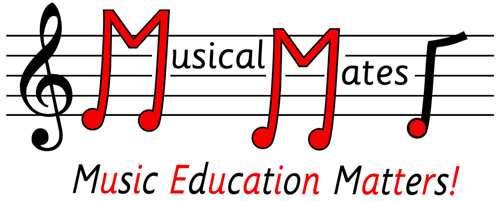Music lessons for Schools
The following are the main instruments which are taught by Musical Mates. If the instrument you are interested in is not listed, please contact us, as it is likely that we will still be able to help you.
We also offer PPA music cover; organise school choirs and after school clubs.
Guitar, Keyboard and Percussion
Ukulele
The Ukulele is a very popular instrument. It is taught in schools mainly as a wider opportunity/first access to music. It is a perfect instrument to develop an interest in singer songwriter style learning and leads on perfectly to the guitar.
Guitar
The guitar is a very popular instrument. It has 6 strings - the majority of children learning in schools play the nylon classical guitar. The guitar, like the violin, can be made in different sizes, from a 1/4 up to a full size. Metal strings are less appropriate for younger children. As learners get older, they can can transfer to the electric guitar. Most learners will be introduced to chords, tab and traditional notation.
Keyboard
The keyboard is an widely available instrument. It is taught in small groups and is played as both a solo and ensemble instrument. As an electronic instrument, it is capable of great sound creation. The first real synthesiser was developed in the 1960's and was called the Moog.
Drum Kit
The drum kit is a very popular instrument. It consists of 2 main parts, the drums and the cymbals. Playing drums is a very physical instrument and helps children develop very good coordination, as learners use both feet and hands. All drummers learn a form of notation and progress through the rock school grades.
String instruments
Violin
The violin was first invented in about 1550. It comes in many different sizes from an 1/8 size, suitable for children aged 5-7 up to a full size instrument, normally played by children 12 and over. The violin is a stringed instrument played with a bow; it has four strings, tuned at intervals of a fifth; and an unfretted fingerboard. The violin is the smallest of all the stringed instruments and is capable of great flexibility in range, tone, and dynamics.
'cello
The 'cello (also known as violoncello) is a large, low-pitched instrument of the violin family. Due to its size, the instrument is held between the knees of a player, supported by a spike. Like the violin, it is an extremely expressive instrument and has a great flexible range.
Double Bass
The double bass is the largest instrument in the string family. It can be played both with a bow and more commonly, plucked (pizzicato) for styles such as jazz. Most learners who play the double bass also play the electric bass guitar as the fingering is the same.
Woodwind Family.
Recorder
The recorder is one of the oldest woodwind instruments and was known to exist in the 13th century. It was made out of wood but in schools is now commonly made out plastic. The recorder is often taught as large group instrument and pupils can often access a club to play within school.
Chalumeaux Clarinet (pronounced shallumow)
The Chalumeau clarinet is a medieval instrument which has been brought into the 21st century. It is a simple instrument which is designed to be a 'learning stepping stone' leading to continuing on the saxophone, clarinet etc. The Chalumeau plays in the key of C and so can easily play with recorders and violins.
Flute
The flute was made out of wood but now is made out of metal. There are 2 types of design for younger players. The first is the traditional straight head joint, the other is a curved head to help children balance the instrument. The Flute is played by blowing across the mouthpiece. The flute has very similar fingering to the recorder and plays in the Key of C.
Clarinet
The clarinet is a reeded instrument. It comes in a case and is made up of 5 different parts. It is suitable for pupils from Year 4 upwards as long as they have their second front teeth. The clarinet is an instrument which pupils can make good progress on. It plays in the Key of Bb. There are several types of clarinet; the Eb which is smaller; the A Clarinet which is played in orchestras; and the bass clarinet.
Saxophone
The saxophone was invented by Adolf Sax and is a relatively recent instrument. It has 4 members to its family; the Alto Sax, which is the smallest and the most commonly played in schools; the Tenor; the Baritone and the more unusual Bass. Saxophones were invented to be a blend between woodwind and brass instruments using a reed and made out of brass. Most of the music written for the saxophone is more modern and frequently is of a Jazz style.
Brass
Cornet/Trumpet
The cornet and trumpet a very similar. They both play in the Key of Bb. They are simple instruments and only have 3 valves. It is the pressure the player uses with their lips that changes the sound.
Eb Horn
Very common in brass band. As the name suggests, the Eb Horn plays in the key of Eb! It is larger than the cornet but uses the same principles of lip pressure and 3 valves to change the pitches of the notes.
Baritone
The baritone is a larger brass instrument. Just the same as the cornet and Eb horn. It has 3 valves.
Trombone
The trombone is different to all the other brass instruments as it does not have any valves but a slide for changing the notes.
If the instrument you are interested in is not listed, please contact us, as it is likely that we will still be able to help you.










